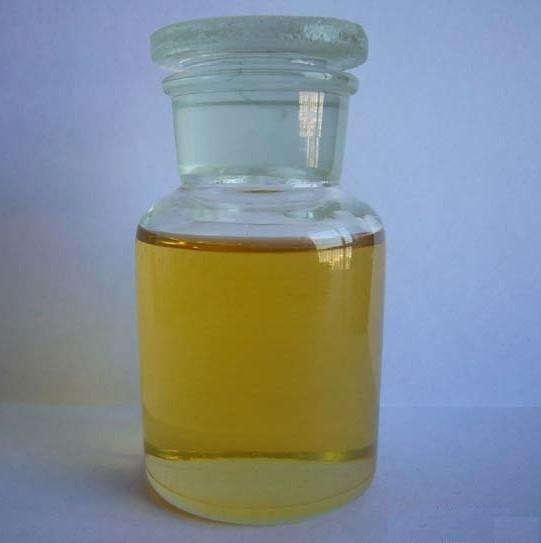At present, the antirust materials commonly used in the metal processing industry are mainly divided into the following categories:
(1) Inorganic, mainly sodium nitrite, molybdate, borate, etc. Rust agent, but the formed anti-rust film layer is not very dense, need some film-forming agent to assist.
(2) Organic, mainly alcohol amines, carboxylates (mainly monobasic acids, dibasic acids and tribasic acids), boric acid esters , amides, etc., such antirust materials will be used in different industries. Among them, carboxylic acids are the most widely used anti-rust additives. Before use, they need to be neutralized with different types of alcohol amines to form carboxylic acid amines, but the cost of such anti-rust agents is relatively high. Boric ester antirust agents not only have good anti-overprint effect, but also have certain antibacterial ability, but these antirust agents are not stable enough and may be hydrolyzed.
(3) Coalescing aids, currently reported more are polyethylene glycol, sodium polyacrylate, water-soluble resin, etc., some people have done experiments to verify , PEG1500 has a better film-forming effect than PEG400.

Patent status of research on low-residue water-based rust inhibitor
According to the application practice of water-based anti-rust agents, the metal processing industry has higher and higher requirements for the surface of workpieces after processing, whether water-based anti-rust agents are used alone or When added to other water-based metalworking fluids, it is required that there should be no visible residues on the surface of the workpiece after use (including white residues, solid particles, soft and sticky residues, etc.), and it should not affect subsequent processing, such as assembly, welding, etc. Therefore, research on low-residue water-based rust inhibitors has become one of the research objects of many practitioners in the industry. The research results or research progress that have been published, reviewed or authorized are shown in Table 1 below.
Low residue water-based anti-rust agent is characterized by the use of organic matter as the main anti-rust agent, such as carboxylate, alcohol amine, boric acid, borate ester, silane, etc. , while adding some film-forming aids to enhance the film-forming effect, such as sodium polyacrylate and polyethylene glycol, considering the wettability and permeability, the film-forming aids can also be some surfactants or alcohol ether solvents, which can be selected The surfactants are mainly cationic surfactants and nonionic surfactants. Among them, after the cationic surfactant is adsorbed on the metal surface, the alkyl chain has a certain hydrophobic effect when exposed to the air, which helps to isolate the humid air and maintain the self-cleaning function. It will be an important research direction of water-based metal rust inhibitors. .
Application status of water-based rust inhibitor
The common rust problems in the heat treatment industry are rust after tempering, rust during placement after tempering or rust after tempering and shot blasting. In extreme cases Rust will appear after quenching and cleaning. At present, more and more customers in the industry are beginning to use environmentally friendly water-based antirust agents. After quenching, they are cleaned with water-based cleaning agents and rinsed with water-based antirust agents. However, this type of antirust agent has a disadvantage, because the effective antirust ingredients are mainly Organic matter, after high-temperature tempering, will produce certain pyrolysis, which will reduce the anti-rust effect, but it will have little effect on low-temperature tempering. There are also some enterprises that still use traditional inorganic anti-rust agents, with sodium nitrite as the main anti-rust component. Exterior. Some customers also use emulsified antirust agent, which has good anti-humidity effect and certain anti-salt spray ability.
In the machining process of metal workpieces, water-based rust inhibitors are mainly used for inter-process rust prevention, while anti-rust oils are used for storage and long-term rust prevention. Mainly. Compared with anti-rust oil, water-based anti-rust agent has good cleanability, especially in the process of metal processing, it is easy to be removed before entering the next processing, or can be processed directly. At the same time, water-based anti-rust The agent generally has good compatibility with cutting fluid, grinding fluid, cleaning agent and other water-based processing media.
Currently, such antirust agents mainly use carboxylic acids and amines as the main antirust components, and are mixed with amides, borates, surfactants, and other ingredients. Membrane additives, etc. are compounded to achieve a synergistic anti-rust effect. If multiple materials are used for anti-rust, some non-ferrous metal corrosion inhibitors need to be added. Affected by factors such as enterprise size and business scope, geographical location, and local regulatory requirements, each enterprise has different selection criteria for water-based anti-rust materials. Choose to use green and environmentally friendly water-based rust inhibitors. However, there are still some companies that use anti-rust components with potential health hazards, mainly based on cost considerations, and partly to meet the company’s own expectations for anti-rust time.
In order to enhance the anti-rust performance of water-soluble industrial medium products, water-based anti-rust agents can also be added to other water-based products to enhance the anti-rust ability. In order to reduce the risk of use and experience better service, companies using water-based rust inhibitors generally choose the same medium supplier for the upstream and downstream processes. On the one hand, it is because the compatibility between the media is better. solution.

 微信扫一扫打赏
微信扫一扫打赏

